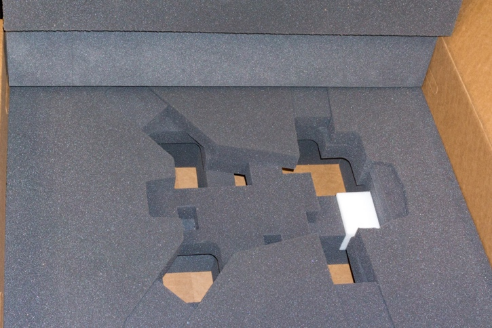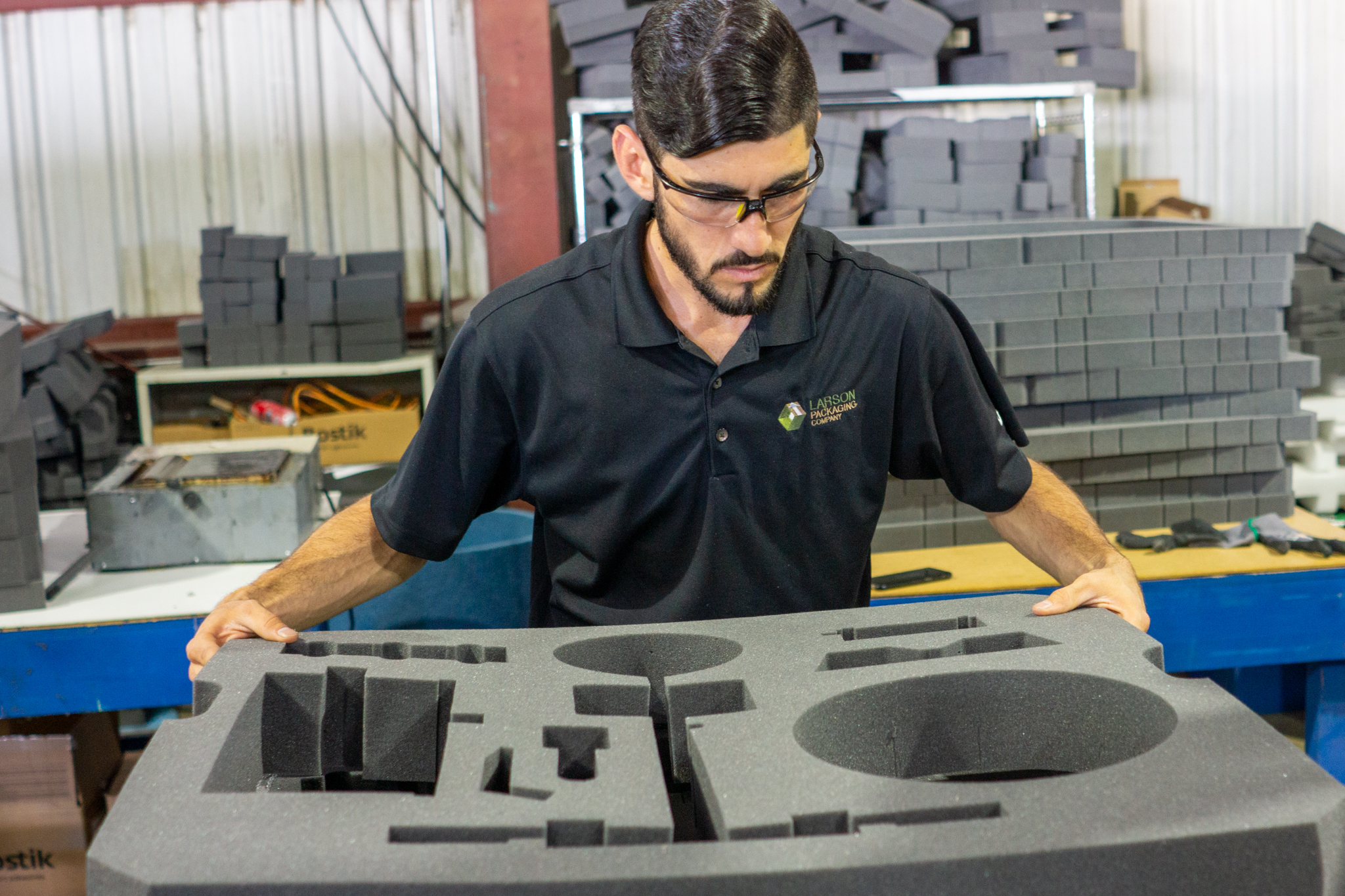Types of Industrial Packaging Foam and Their Applications
27 March 2020

Foam can be designed, cut, and fabricated to hold any shape. Many products have protrusions like flanges, brackets and buttons that change the overall surface of the product or have varying degrees of fragility or ability to bear weight, all of which can be accommodated with a foam packaging design.

Foam is easily adapted with grooves, notches and curves to fit a product’s uniqueness. A good packaging design will contain and protect your product at an optimal price while meeting your branding or presentation goals.
Choosing Foam for Your Packaging Needs
The choice of a particular foam is made by considering the following:
- Product weight and fragility
- Foam positioning and cushioning
- Abrasion
- Performance and organization
- Aesthetics
- Other factors such as off-gassing, etc.
Foam constructs such as trays and inserts can have other benefits such as isolating and organizing separate components or subassemblies. Once the needs of the application are determined, a packaging designer will then determine and specify:
- Foam type
- Density and performance characteristics
- Bearing area, static loading and cushion thickness
Types of Common Foam Polyurethane
 Polyurethane (PU) is a common polymer used to make foam, particularly for furniture, but also for packaging. It has an elastic open-cell structure, and is relatively soft, which provides a wide range of performance especially useful for delicate and lightweight items, or those very sensitive to vibration.
Polyurethane (PU) is a common polymer used to make foam, particularly for furniture, but also for packaging. It has an elastic open-cell structure, and is relatively soft, which provides a wide range of performance especially useful for delicate and lightweight items, or those very sensitive to vibration.
Polyethylene
Polyethylene (PE) is a closed-cell, non-absorbent foam that is impervious to mildew, mold, rot, and bacteria as well as highly resistant to chemicals. A medium weight polyethylene foam provides excellent protection for products that have average to low fragility.

With the right design it can also protect lighter and more fragile products. It is great foam for positioning and cushioning. PE is available in extruded planks and laminated sheets. PE is available in a wide range of thicknesses, densities and colors. Recycled PE is one of the most commonly used foam packaging materials.
Cross-Linked Polyethylene (XLPE)
Cross-linked polyethylene foam is a high density, closed-cell foam characterized by a compact feel and its resistance to water and chemicals. The cross-linking of polyethylene is a chemical or irradiation process that ties all of the polymer molecules together with a stronger chemical bond.
XLPE has many of the same properties as polyethylene foam and is a good choice to protect class “A” surfaces due to its non-abrasive properties.. XLPE is used extensively in the packaging of medical products and equipment because it generates very limited particulate. XLPE is often used in multi-part presentation kits because of the materials high-end look and feel. Most PU and PE and some XLPE foams are available in anti-static formulations.
Expanded Polyethylene/ Polypropylene (EPE/EPP)
Expanded polyethylene (EPE) and expanded polypropylene (EPP)—also referred to as beaded foam—are produced by “popping” or expanding small beads of polymer and fusing them together with temperature and pressure into a mold.
EPE is safe for class A surfaces. Both EPE and EPP are used extensively in automotive and packaging applications where durability, multiple impact resistance and other demanding performance challenges must be met.
 These foams also have very low compressive creep, and will return to their original shape after continuous loading. Both EPP and EPE offer superior cushioning ability at half the density compared to other materials. It can be a great material for many packaging applications because less of it can be used than traditional PE or cross-linked polyethylene (XLPE) and it is also recyclable (XLPE is not).
These foams also have very low compressive creep, and will return to their original shape after continuous loading. Both EPP and EPE offer superior cushioning ability at half the density compared to other materials. It can be a great material for many packaging applications because less of it can be used than traditional PE or cross-linked polyethylene (XLPE) and it is also recyclable (XLPE is not).
Work with your packaging partner to select the right foam for your application.
Selecting a packaging partner with knowledge and experience about the performance properties of various foams can improve your packaging. At Larson Packaging Company our design team can help you identify the correct type, amount and density of foam to ensure that your product will always arrive safely.
